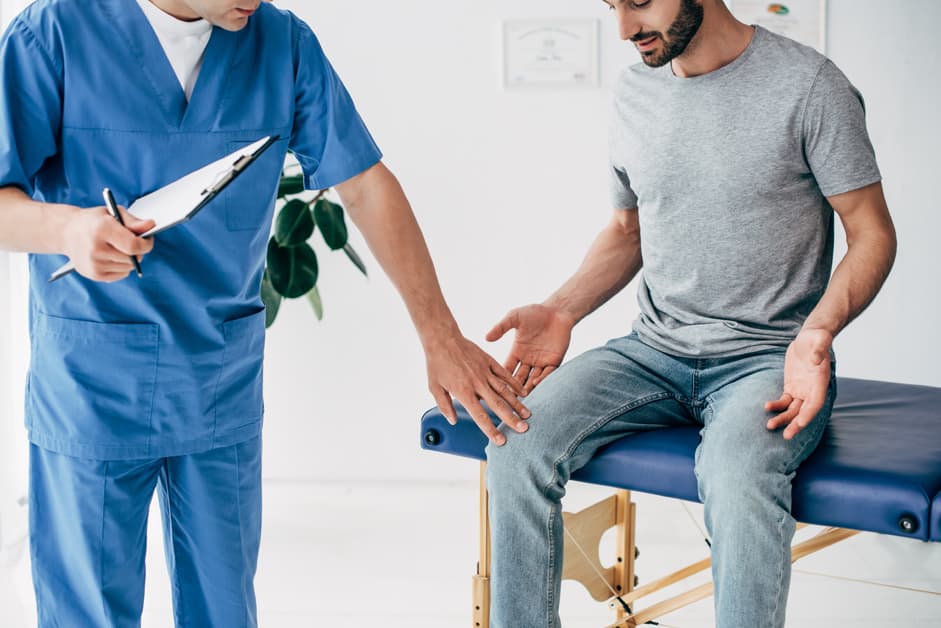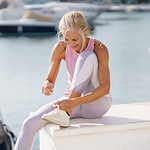Introduction
Knee pain can have various causes. It may be from an injury, like a sprain, tear or break. Or, it might be due to medical conditions, like arthritis. Or, it may come from overuse. Pain levels differ among people, but rest and recovery are always essential for dealing with knee pain.
Resting is vital. It gives your body the time to heal and reduce discomfort. Recovery includes tactics, such as physical therapy, exercise, and lifestyle changes, that help you control and lessen the knee pain. This guide will explain how to make the most of rest and recovery, so you can live a dynamic life with no knee pain.
Causes of Knee Pain
Knee pain? Could be from many things. Sports-injury, arthritis, overuse, or even a more serious medical condition. Also, weak muscles, a lack of flexibility, or a hip/spine misalignment.
To manage it, learn the possible causes of knee pain. That way, you can make the right decisions.
Overuse injuries
Overuse injuries are a typical source of knee discomfort. This harm happens when a muscle or joint is used too much, or for too long, which creates inflammation and wear. Overuse injuries can come on gradually due to repeated motions like running, cycling, or climbing stairs, or they can arise suddenly from strenuous activity. Symptoms are swelling and dull to sharp pain, at rest or when being used.
To avoid overuse injuries and alleviate knee pain, rest and recovery are vital. Balance your exercise with rest periods, to give your body the break it needs. Stop any activity that causes joint pain. Icing your knee for 15 minutes following exercise can help reduce inflammation and speed up healing.
To prevent injury from overuse, consider the following:
- Taking breaks during activities
- Using proper form
Postural imbalances
Postural imbalances can cause knee pain. Your body is designed to have integrated systems which work together. Muscle balance and posture should be in harmony when seated, standing or lying down. When one area is off, it can cause an imbalance. This leads to bad posture and improper gait mechanics, which puts strain on the muscles around the knees.
Common imbalances associated with knee pain include weak quadriceps and hip abductor muscles, and tight IT bands. A physical therapist can assess movement and spot postural imbalances that could be causing knee pain. Through exercises and stretches, weakened muscles can be strengthened and tightened ones relaxed for better posture.
Muscle imbalances
Muscle imbalances cause knee pain. When the muscles in the knee joint work too hard, it can cause strain and pain. Weak core muscles also put extra stress on surrounding muscles.
Here are some imbalances that cause knee pain:
- Quadriceps overactivation: The biggest muscle group in the thigh, the quadriceps, provide stability and movement to the knee. If one set of muscles is too strong compared to its counterpart, the patella can become misaligned and cause instability. This puts pressure on ligaments and tendons around the knee, resulting in pain.
- Hip abductor/adductor imbalance: An imbalance between the external and internal rotators located on the hips can result in “hip hike” or “knee hike.” This puts extra strain on the lower limbs while doing weight-bearing activities.
Treatment includes restoring balance by strengthening weakened muscles and foam rolling tight ones. Stretch and use strength training for different muscle groups to ensure harmony and avoid strain or injury in the knees.
Rest and Recovery Strategies
Rest & Recovery is key for knee pain relief! Taking rest & recovery strategies can help with reducing pain, inflammation and rebuilding muscles. Plus, it reduces the risk of re-injury.
Here’s a guide to rest & recovery strategies for knee pain relief:
- Step by step.
Ice and heat therapy
Ice and heat therapy are popular recovery tactics. They help reduce inflammation, decrease pain, and induce relaxation. Ice therapy works by constricting blood vessels and numbing the area to relieve pain. Heat therapy boosts circulation, increases flexibility, and soothes muscles, ligaments, and joints.
Be careful not to stay on one area too long or use either type of treatment when you have an injury that bruises easily or has broken skin. Use each for around 15-20 minutes for best results.
To get the most out of the treatment, wrap the area in a towel or protective covering before applying. For example, when using an ice pack, wrap it in a towel before putting it on the skin. This will prevent burning and help control the application. Also, check regularly when applying ice packs as very cold temperatures can cause pain and uncomfortable numbness. Never leave an ice pack on for longer than 20 minutes.
Stretching exercises
Stretching exercises can be key for rest and recovery. When done right, they can increase flexibility, improve posture and decrease muscle tension. To get the best out of stretching, it’s important to do exercises that target specific muscles or groups.
Common types of stretching include static, dynamic and active isolated stretching. Static stretches are held for 10-30 seconds to target certain parts of the body. Dynamic stretching uses controlled movements to gently contract and relax different muscles. Active isolated stretching activates a muscle with short contractions before releasing into a stretch – great for athletes who want to increase range of motion without risking injury.
It’s important to warm up with dynamic and active isolated stretches before any physical activity. And, after physical activity, complete static postural stretches as part of the cool-down process. This helps promote flexibility and proper form for everyday activities.
Strengthening exercises
Strengthening exercises can help with strength, endurance, mobility, posture, and coordination. But, be careful not to overdo it – too much strain can lead to injury. The type of exercise depends on your goals and fitness.
- Stretching increases flexibility and reduces tension in the muscles.
- Resistance training using weights or bands builds strength and improves cardiovascular fitness.
- Aerobic activities, such as walking, jogging, or swimming, keep your heart rate up and help your body heal.
Rest is important, but active forms of recovery – like strengthening exercises – get you back in optimal shape quickly and safely.
Rest and sleep
Proper rest and sleep are key for your physical and mental health. Rest helps with healing, reducing stress, and restoring energy. The amount of rest you need depends on you and the situation. Usually, adults need 7-8 hours of sleep per night.
Strategies for proper rest and recovery include:
- Creating a regular sleep/wake cycle: Going to bed and waking up at the same time helps your body know when it’s time to wind down. Keep an active day schedule – no naps if possible.
- A comfortable sleeping environment: Reduce noise and light, and don’t use electronics like TVs. Make sure the temperature and cleanliness of your room is good.
- Exercise regularly: Do physical activity daily. This will help you tire out and fall asleep faster. You’ll feel more rested!
- Have low sugar snacks: Eat snacks like crackers, granola bars, or fruit. Eat them an hour before bed so you don’t get hungry during the night.
Long-Term Strategies
Rest and recovery are crucial for relieving knee pain in the short-term. But to make sure that relief stays, long-term strategies are necessary. Here, we’ll go over why rest and recovery are so important for knee pain relief. Plus, a few tips for successful long-term strategies:
Maintaining a healthy weight
Achieving a healthy weight is key for reducing knee pain and improving overall health. Carrying extra weight puts your knees under more strain, increasing the risk for osteoarthritis and other joint issues. Being overweight also affects your mobility, further stressing the joints. So, it’s important for those who are overweight to try and lower their body mass index (BMI) by exercising more and eating less.
Set realistic goals that you can gradually work towards. Losing 5-10% of your body weight can make a big difference. Ask your doctor or nutritionist for specific advice on how to get to and stay at a healthy weight.
Eating the wrong foods – such as too much red meat and processed items with lots of sodium, sugar and fat – may cause inflammation and nutritional deficiencies. To fight inflammation, include omega-rich fish, nuts, and fresh fruits & veggies in your diet. To take pressure off your joints, do low-impact aerobics or swim at least 3 times a week. This can help you build strength and make it easier to do daily activities that involve physical activity.
Wearing proper footwear
Choosing the correct shoes can help reduce knee pain. The wrong pair can worsen it. Look for shoes with cushion in the heel, arch support and a wide, deep toe box so your feet can move naturally. Select the right size. If the shoe is too tight, it may cause discomfort in the feet and knees.
For active runners or walkers, motion control shoes with a firm midsole are best. For everyday use, go for lightweight materials like mesh that provide breathability and flexibility while still providing stability to reduce knee stress.
Consult with a physical therapist if you have recently had an injury or surgery. They can recommend sneakers that will protect your feet, ankles and knees during exercise.
Adjusting your posture
Good posture can make a big difference for knee pain relief. People with chronic knee pain should assess and adjust their posture. Poor sitting and standing habits, such as slouching, can cause misalignment of the knees and lead to joint tension, strain, and inflammation.
When seated, keep your feet flat on the floor and your thighs parallel. Shoulder blades should be in line with your hips and your head should be parallel with your spine. If this is too hard due to discomfort, ergonomic chairs can provide support.
When standing,
- balance evenly on both feet with knees slightly bent.
- engage core muscles by pulling your belly button inward.
- imagine energy extending through your limbs up to your shoulders.
- relax your neck muscles and imagine yourself getting taller.
Taking regular breaks
Take regular breaks when doing long activities. Every fifteen to twenty minutes, if you can. Stand up and stretch. Don’t stay seated too long. Doing this will relax your lower body muscles, especially around your knees. It also increases blood flow and circulation.
If you must sit for a long time, use a footrest or a balance ball. Alternate between sitting and standing. This light exercise will help reduce knee pain over time.
Conclusion
To wrap it up, rest and recovery are essential for any knee issue. Investing the time to recover well, yields a stronger knee. A mix of medical treatment, physical therapy, massage, and lifestyle changes like rest and nutrition helps you feel energized and able to tackle your next goal. Remember: recovery is key.
- Rest when needed.
- Consult a doctor if pain persists or worsens.
- Look after yourself to keep your knees healthy!
Frequently Asked Questions
Q1: What are the benefits of rest and recovery for knee pain relief?
A1: Rest and recovery is important for knee pain relief because it gives the affected joint and muscles time to heal. It also helps to reduce inflammation, which can reduce pain and discomfort. Additionally, rest and recovery can help to improve range of motion and improve overall strength and flexibility.
Q2: How long should I rest and recover if I have knee pain?
A2: The amount of time that you should rest and recover depends on the severity of your knee pain. In general, it is recommended to rest the affected joint and muscles for a few days to a week. If your pain persists, it is important to speak with a healthcare provider for further guidance.
Q3: What activities can I do to help with knee pain relief?
A3: There are a variety of activities that can help to relieve knee pain. These include stretching and strengthening exercises, which can help to improve flexibility and strength. Additionally, hot and cold therapy, massage, and low-impact activities such as swimming and cycling can help to reduce pain and discomfort.





